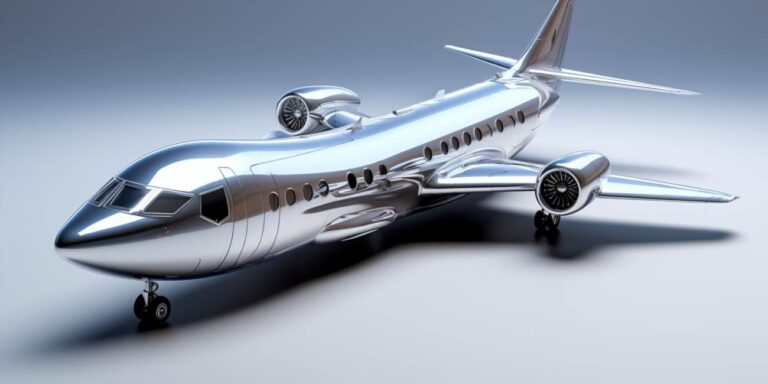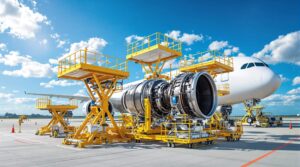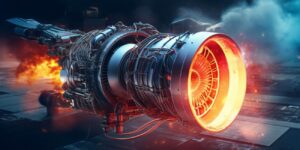One of the most widely employed aluminium alloys in aircraft construction is 7075. Known for its exceptional strength-to-weight ratio, 7075 aluminium alloy is often used in structural components, such as wing spars and fuselage frames. Its high strength makes it ideal for applications where load-bearing capabilities are paramount, ensuring the structural integrity of the aircraft.
6061 aluminium alloy is another key player in aviation engineering. Renowned for its versatility and corrosion resistance, 6061 is commonly utilized in the manufacturing of aircraft components like landing gear, as well as structural elements. The ability to withstand harsh environmental conditions while maintaining structural stability makes it a preferred choice for critical aviation parts.
When it comes to applications demanding a combination of strength and formability, 2024 aluminium alloy takes the spotlight. This alloy is often employed in aircraft skin panels and other components that require shaping during the manufacturing process. Its excellent formability ensures that intricate and aerodynamically crucial parts can be crafted without compromising on strength.
Moreover, what aluminium alloy is used for aircraft can depend on the specific requirements of different aircraft types. For instance, regional jets and smaller aircraft might make extensive use of 6063 aluminium alloy, valued for its ease of extrusion and favorable balance between strength and weight.
In addition to their individual characteristics, these aluminium alloys contribute to the overall fuel efficiency of aircraft. The lightweight nature of these alloys reduces the overall weight of the aircraft, leading to improved fuel economy and enhanced performance. This weight-saving feature is especially crucial in the aerospace industry’s constant pursuit of increased efficiency and reduced environmental impact.
Aluminum alloys 2024 and 7075 for aircraft skin and structures
Aluminum alloys 2024 and 7075 play crucial roles in the construction of aircraft skin and structures, offering a combination of strength, durability, and lightweight properties that are vital for aviation applications.
When it comes to aircraft skin, the 2024 aluminum alloy stands out. This high-strength, heat-treatable alloy is primarily composed of copper as its main alloying element. The addition of copper enhances the alloy’s strength, making it well-suited for applications where structural integrity is paramount. Additionally, 2024 features a small amount of other elements such as manganese and traces of other metals.
On the other hand, 7075 aluminum alloy is another formidable contender for aircraft structures. This alloy is renowned for its exceptional strength-to-weight ratio, making it an ideal choice for components subjected to heavy loads. The main alloying element in 7075 is zinc, and it also contains small amounts of copper, iron, manganese, and other elements. The presence of zinc contributes to the alloy’s superior strength, making it a go-to material for structural applications.
Comparing the two, while both alloys are renowned for their strength, 7075 generally exhibits a higher strength level than 2024. However, 2024 compensates by offering better formability and corrosion resistance. The choice between these alloys often depends on the specific requirements of the aircraft and the trade-offs that the design demands.
One important consideration in aircraft construction is fatigue resistance. Both 2024 and 7075 exhibit excellent fatigue resistance, crucial for ensuring the longevity and safety of the aircraft structure over repeated flight cycles. This property is especially critical for components experiencing dynamic loads, such as wings and fuselage sections.
Moreover, the machinability of these alloys is a key factor in the manufacturing process. 2024 tends to have better machinability compared to 7075, making it more suitable for intricate components that require precision machining.
Table below provides a concise comparison of key properties between 2024 and 7075:
| Property | Alloy 2024 | Alloy 7075 |
|---|---|---|
| Strength | High | Very High |
| Formability | Good | Moderate |
| Corrosion Resistance | Moderate | Low |
| Machinability | High | Moderate |
Alclad aluminum alloy sheet metal for fuselage and wings
Alclad aluminum alloy sheet metal plays a pivotal role in the construction of aircraft fuselage and wings. These sheets are meticulously crafted to meet stringent aviation standards, providing a delicate balance between strength and weight. The use of Alclad, a material consisting of a core alloy sandwiched between layers of pure aluminum, enhances both corrosion resistance and structural integrity.
When it comes to aircraft design, the choice of panels is crucial. Alclad aluminum alloy panels offer a lightweight solution without compromising on durability. The riveting process becomes a delicate dance, securing these panels together to form a seamless and aerodynamically efficient structure. Each rivet not only binds the Alclad sheets but also contributes to the overall strength of the fuselage and wings.
The significance of aerodynamics in aviation cannot be overstated. Alclad aluminum alloy panels are shaped and positioned with precision, considering the principles of aerodynamics. Smooth surfaces reduce drag, enhancing the overall performance of the aircraft. The interplay of Alclad sheets and panels contributes to the creation of an aerodynamically optimized structure, ensuring efficient lift during flight.
Speaking of lift, the wings of an aircraft are meticulously designed with Alclad aluminum alloy sheets to achieve the desired aerodynamic characteristics. The curvature and composition of the wings, influenced by the properties of Alclad, are tailored to generate optimal lift. This careful balance between materials and design is essential for the aircraft to ascend gracefully into the skies.
On the flip side, minimizing drag is equally crucial. Alclad aluminum alloy panels contribute to the reduction of drag by providing a sleek and streamlined surface. The riveting process, ensuring a tight connection between sheets and panels, plays a role in diminishing aerodynamic resistance. This meticulous attention to detail is a testament to the integration of science and engineering in aviation design.
Aluminum alloy castings and forgings in landing gear and engines
Aluminum alloy plays a pivotal role in aerospace engineering, particularly in the manufacturing of components such as landing gear, engines, and wheels. The utilization of aluminum alloy castings and forgings in these critical aviation elements ensures a delicate balance between durability and weight, essential for optimal aircraft performance.
In the realm of aviation, the landing gear is a linchpin for ensuring a safe touchdown. Aluminum alloy castings provide the necessary strength to withstand the immense forces during the landing process. The incorporation of forged aluminum components further enhances the structural integrity, making the landing gear robust yet lightweight, a crucial consideration for every takeoff and landing.
Engines, often considered the heart of an aircraft, rely on the efficiency and reliability of their components. Aluminum alloy crankshafts are instrumental in converting reciprocating motion into rotational motion, a pivotal function in the engine’s operation. The use of aluminum alloys in these critical parts not only ensures durability but also aids in maintaining a favorable power-to-weight ratio, a paramount factor in aviation engineering.
Wheels are another domain where aluminum alloy shines. The wheels of an aircraft are subjected to immense stress during takeoff, landing, and taxiing. Aluminum alloy wheels, with their high strength-to-weight ratio, provide the necessary resilience to bear the aircraft’s weight while contributing to fuel efficiency. These wheels are often crafted through casting processes, ensuring precision and uniformity.
Turning our attention to the internal components, cylinders within the engine are crucial for the combustion process. Aluminum alloy cylinders offer a lightweight solution without compromising on strength. This balance is essential for optimizing the overall efficiency and performance of the engine.
When discussing aircraft engines, the terms torque and turbulence come to the forefront. Torque, a measure of rotational force, is a critical consideration in engine design. Aluminum alloy components, including crankshafts and other rotational elements, play a significant role in managing and transmitting torque efficiently, ensuring smooth engine operation.
Additionally, the aerodynamic characteristics of an aircraft are influenced by factors such as turbulence. Aluminum alloy structures contribute to the overall aerodynamic efficiency, minimizing the impact of turbulence and enhancing the aircraft’s stability during flight.
Lastly, the concept of thrust is central to aviation. The propulsion system, which generates thrust, relies on a combination of materials and design. Aluminum alloy components in engines contribute to the overall thrust production, providing the necessary strength and durability to withstand the intense conditions of combustion and propulsion.






